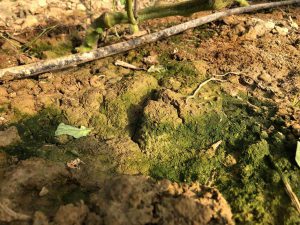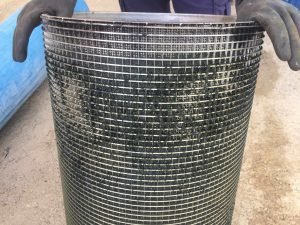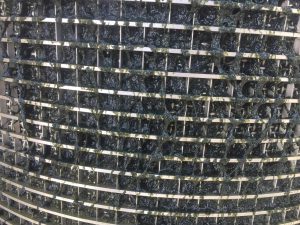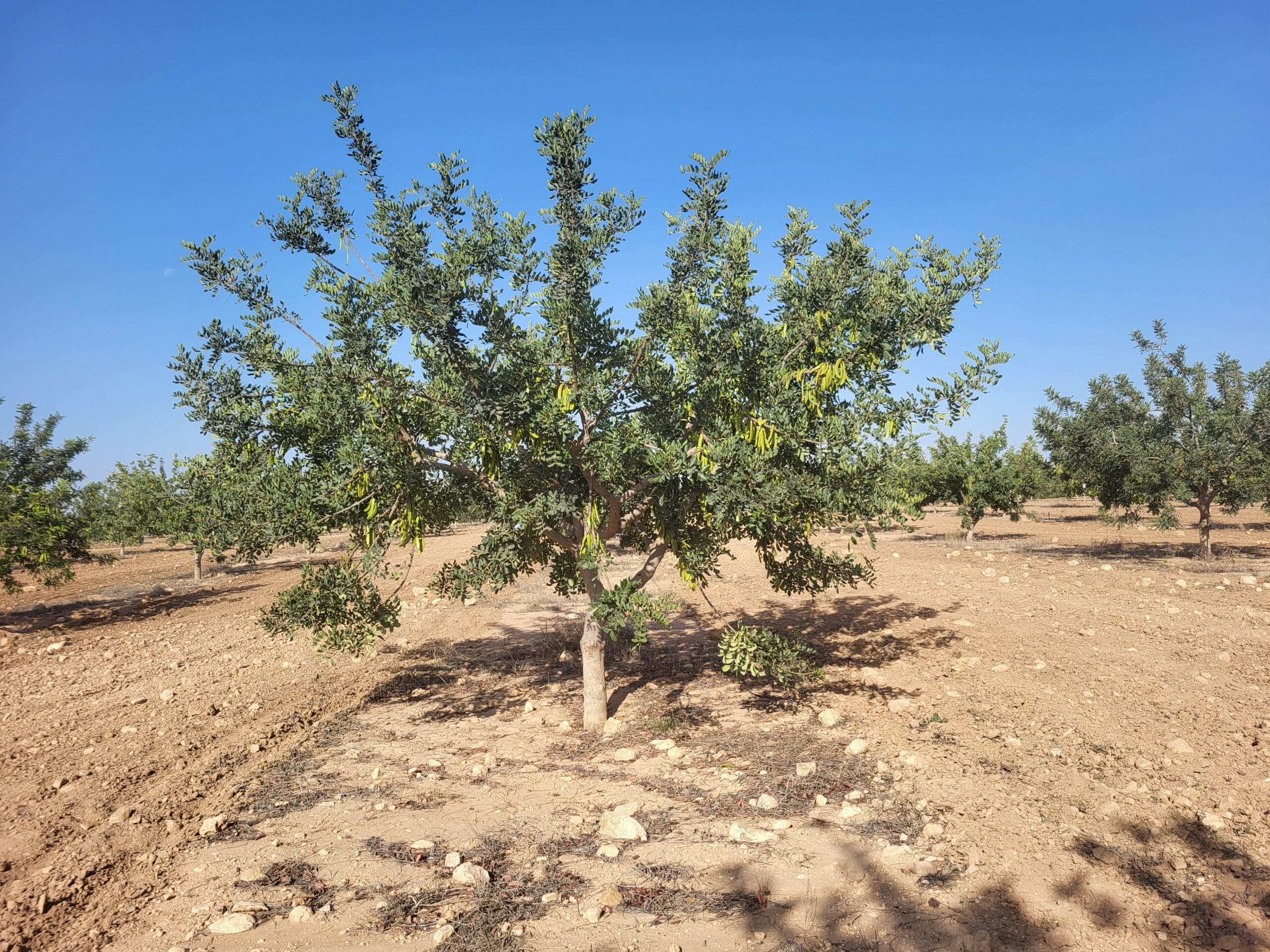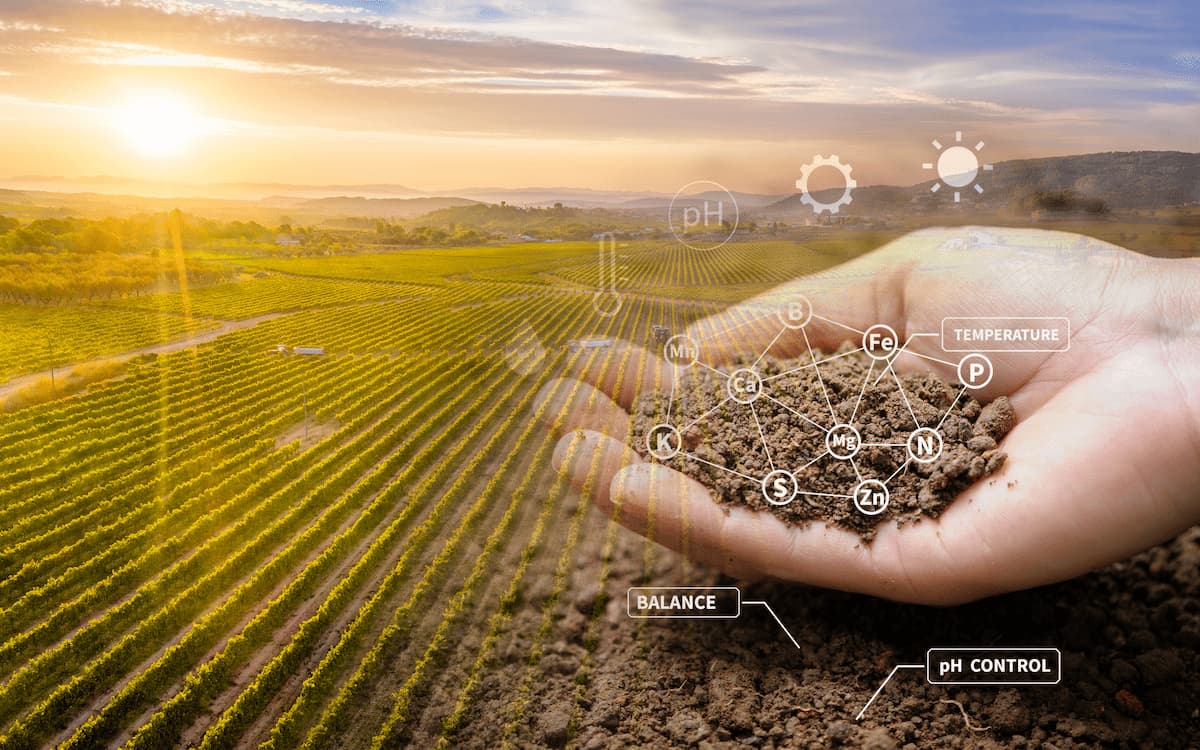Table of contents
As professionals in the sector, we often come across irrigation installations with serious difficulties due to the presence in the network and equipment what is commonly known as oba, algae, slime, dirt… which causes clogging of the emitters, loss of efficiency of the installation and an increase in the frequency and intensity of maintenance work.
Biofilm arises due to the tendency of microorganisms to group together and if action is not taken in time and with knowledge, it can cause a very serious problem when part of the layer formed detaches in the form of sheets or lumps with the capacity to clog the interior of the pipes, and can even clog an entire network of emitters in a definitive and irreversible way in most cases, putting the crop at risk. This is when all the alarm bells go off and the farmer begins to realise the seriousness of the problem.
But… What is biofilm?
Biofilm is a layer of organic mass; generally dark in colour and gelatinous to the touch, which is formed by colonies of associated and organised microorganisms that cover surfaces, generally in contact with water or with a high degree of humidity. These colonies often capture mineral sediments and dissolved salts that make up their structure.
According to the Spanish Agency for Food Safety and Nutrition (AESAN), biofilms are defined as “complex communities of microorganisms growing embedded in a self-produced polymeric organic matrix attached to a surface, either living (mucosal biofilm) or inert, and which may contain a single microbial species or a range of different species”
Biofilm should not be confused with bryozoan. Biofilm consists mainly of colonies of bacteria associated with each other. Bryozoan is formed by a grouping of larger, more complex organisms (up to 0.5 mm) that establish themselves in colonies forming branching stolons often larger than 30 cm, which can clog large irrigation infrastructures.
Biofilm can be found in industrial installations and equipment, in our homes, on the surface of foodstuffs, in our bodies and, of course, in irrigation systems.
Stages of biofilm development
The process of biofilm formation is complex, but can be summarised in four stages:
- Attachment. Attachment of free microorganisms to a surface.
- Division. After irreversible adhesion to the surface, a process of maturation, growth and division begins.
- Exopolymer production. The exopolymer is a layer of protective mucosa that covers the mass reducing the risk of dehydration and guaranteeing microorganisms a comfortable habitat protected from external agents.
- Dispersion. The biological cycle is completed by a final stage of dissemination, which consists of the detachment and dispersion of colonising cells that will attach to new surfaces to start a new cycle.
What factors encourage biofilm formation?
A necessary condition for the development of biofilm is the presence of water, which provides moisture, nutrients and oxygen, as well as serving as a vehicle for the dissemination of free-living colonising microorganisms.
Under favourable conditions, these organisms proliferate, increasing their concentration and therefore the need to organise themselves to colonise new areas. Undisinfected wastewater, stagnant water or water from industry generally contains bacteria and is therefore a source of proliferation and prone to biofilm generation.
These are the conditions that favour the multiplication of microorganisms in our installation:
High temperatures: Biofilm can be generated at temperatures close to zero degrees Celsius, however, it increasdes significantly at temperatures above 25-30°C. Hence, the spring and summer months are more prone to problems caused by the presence of biofilm in irrigation installations.
Neutral Ph: Irrigation waters with neutral or slightly acidic pH values (6.5 – 7) are favourable for the development of this type of microorganisms.
High oxygenation: The biofilm consists of both aerobic and anaerobic bacteria. The former need oxygen for their development and are located in the outer layers of the biofilm; where there is more contact with the flow. A good dissolved oxygen content in the water favours the development of aerobic bacteria.
Nutrients: The organic matter contained in the irrigation water serves as a nutrient for the microorganisms and therefore contributes directly to their proliferation.
Composition and roughness of surfaces: The chemical composition of the materials in contact with water is a determining factor for biofilm development. Organic compounds released by certain plastic materials favour the growth of microorganisms, while materials of a metallic nature such as stainless steel offer greater resistance.
A higher roughness favours the adhesion, establishment and permanence of these microorganisms.
Low flow velocity: A high water velocity within the pipeline hinders the attachment and establishment of microorganisms to the surface and increases the rate of erosion of the biofilm layer, reducing its thickness to a point of equilibrium. Conversely, low flow velocities favour adhesion, establishment and permanence, increasing the thickness of the biofilm.
On the other hand, an occasional increase in fluid velocity can lead to a higher erosion rate and favours the dispersion of cells, which colonise new surfaces.
What are the consequences of biofilm in the irrigation system?
If your irrigation system meets these conditions, you should pay special attention to the presence of biofilm and take the necessary measures so that the problem does not generate significant additional costs and pose a risk to your crop.
Clogging is the last and most serious consequence, but we must bear in mind that biofilm is also the cause of a decrease in the lifespan of irrigation installations, increases the need for maintenance of equipment, generates additional consumption of fertilisers and oxygen, accelerates corrosion and is also a source of pathogens for soil, crops and workers.
In future articles we will discuss this problem and possible solutions in more detail.


